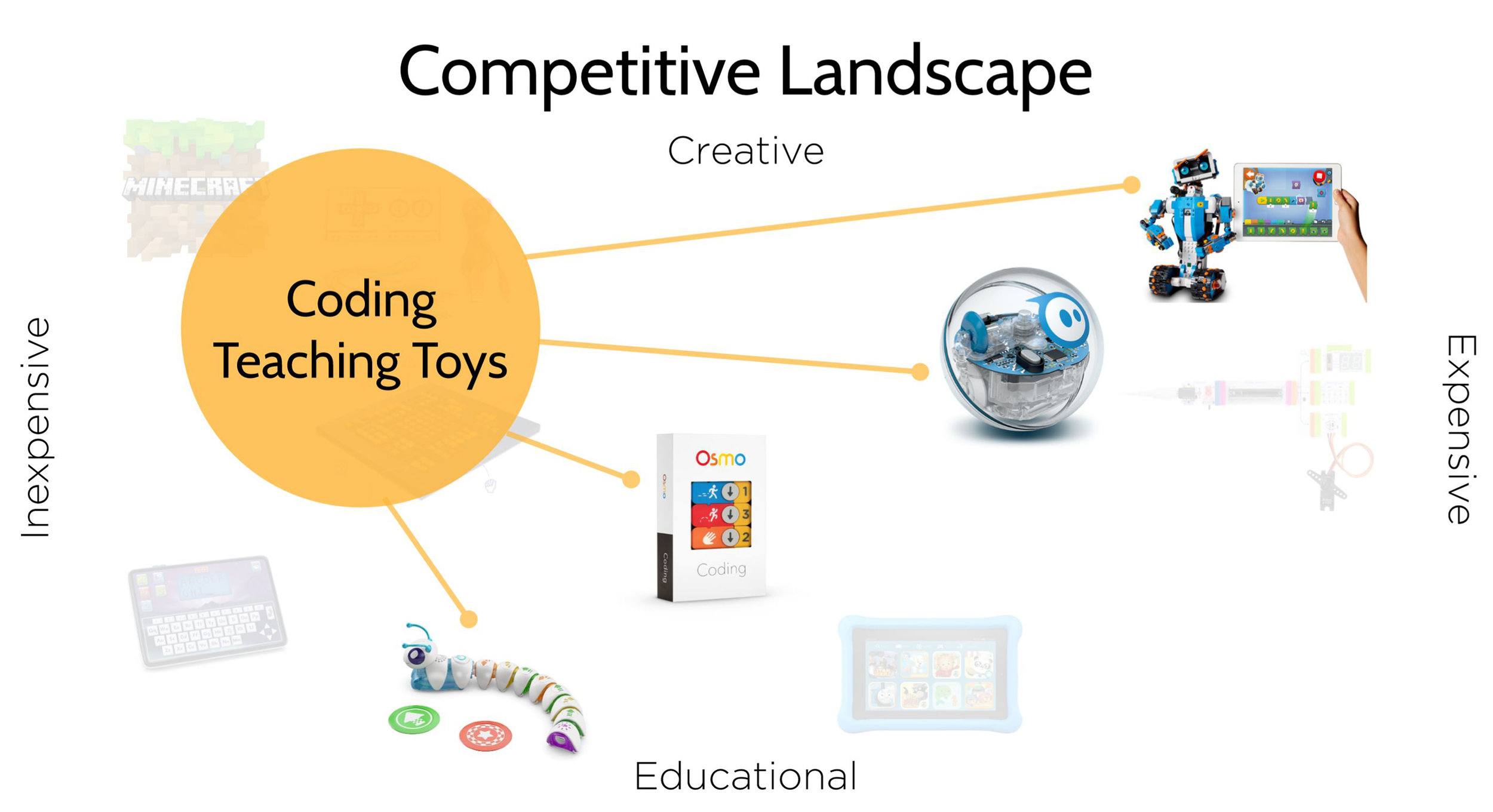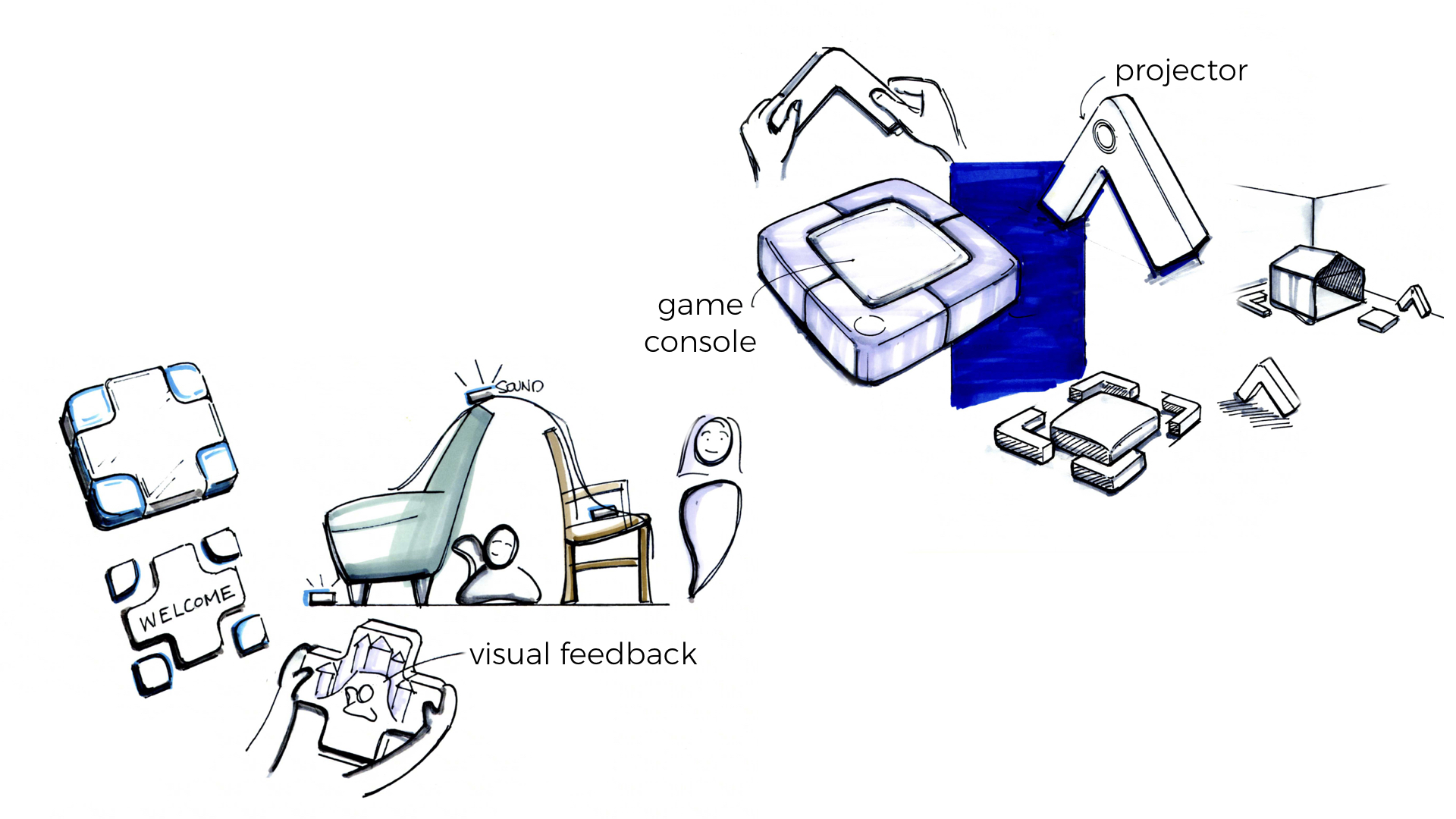Open studio (Spring 2017)
We started the semester by asking:
"how do kids & technology relate?"
Discovery Phase: Research
Child Interviews
Their play preferences, Christmas wishlists, and all time favorites
Parent & Teacher Interviews
Complaints on today's screen-based toys and opinions about long term consequences
So, what is the problem?
In summary, the research indicated that our children's tech addiction comes with a cost. The long term effects involve problems with focus, attitude, and creative drive.
Moving forward, I did a competitive analysis of toys that are tech-based but also educational and promote creativity. This analysis allows me to see gaps and target those areas with my concepts





Reading between the lines...
Opportunity for Solution
What if we had toys that redirected children from being "users" to being "makers"? What if we harnessed digital technology in a new and fresh way?
Harnessing imaginative play
In order to properly design a solution that builds children into creative and driven adults, I took the time to understand the natural phenomenon of Imaginative Play. Imaginative play has many long term benefits for children such as discovering language, learning social ques, and solving problems.
Development
Target User
Storyboarding
I began to story board situations to understand where there was a pain point. Understanding these different scenarios helps me dream up alternative product solutions.



Deciding direction & narrowing vision
Through creating story boards and collaborating with my professor, I decided to focus on the areas of audio and visual effects to enhance the play experience. By enhancing the play environment, the product encourages the child to be star of the show - the child is executive producer, director and actor. By creating this event, we are making a fun and engaging digital experience that allows the child to use imaginative and self-driven play.
Quick form sketches
Now that the function is defined, I can move on to deciding the form.
Quick models
Understanding size, hold-a-bility, and final form resolution
Here, I tried out the sizing of the pie shaped concept.
Making foamcore models to represent a few of my earlier storyboarding ideas.
3D printing parts
Adding electronics and testing if speaker parts could fit inside the shells I built.
Final design: Playslice
The main console stands up, and the projection lens comes up from the inner housing, projecting it during travel.
Play pattern
After spending four months interning with Fisher-Price, I asked the designers there if they had any suggestions for this project. They thought it was lacking an explanation for the "play pattern" - which is the story/sequence of use for a toy or game. These sketches were added six months after this project ended as an extension.




Primitive interface exploration
Interface design was not a part of this project, but Playslice would not be complete without thinking about how children might click through the interface.
Non-wifi content options
I wanted to consider a range of connectivity options for different users. Playslice works best with wifi, allowing it to automatically update with new content everyday. But for those households who are without wifi, there are content chips available to extend their current package.
As you can see, these kids aren't playing on Playslice; they are just playing, and Playslice is adding to their play experience.
What we offer that others don’t?
A toy/game console that compliments imaginative play. A child becomes the story writer - while still using engaging technology.
What problem are we solving for kids?
Meeting their imaginative needs.
What problem are we solving for parents?
Providing parents a more beneficial (yet realistic) entertainment option.





































